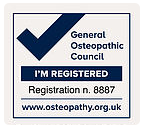Reducing Sciatic pain during pregnancy
If you are suffering from Sciatic pain during pregnancy then help is at hand. Often in the third trimester of pregnancy you can start to feel pain into the gluteal (buttock ) area and it can travel down the back of the leg and can go into the calf.
As the pregnancy progresses and the extra weight at the front continues to increase, the pain down the bac k of the leg can increase from occasionally uncomfortable to very painful.
k of the leg can increase from occasionally uncomfortable to very painful.
Pain Killers are not recommended so what can you do?
You may think that there is no other option than to look up some stretches on Google and hope for the best!
Why does Sciatica occur?
The cause of sciatic pain in pregnancy is most often due to overworked muscles close by the sciatic nerve that runs from your lower back down through the buttock area and down each leg. As ligaments become increasingly relaxed, ready for the birth, your muscles have to work harder in your pelvis and hips to provide you with stability in that area. This often coincides with a slight rotation of the pelvis either to the right or the left. This could have been a pre existing rotation prior to the pregnancy or occurred during it as the body manages the extra weight. This causes one set of pelvic muscles to become slightly shorter and contracted on one side and on the other side they become slightly stretched and overworked. Over time this leads to inflammation of the overworked muscles and pressure on the sciatic nerve leading to the term Sciatica.
What can you do to calm it down?
As an osteopath my aim is to improve the health of the tissues, in this case, the muscles on the overworked side and to address the structural changes, the rotation. I improve the health of the tissues on the side of the sciatic symptoms by improving the circulation through soft tissue massage and sometimes Medical Acupuncture. The structural change, the rotation, on the opposite pain free side, I address through Therapeutic Functional exercise. I tailor the exercises to the patient but one of exercise that forms the basis is this exercise.
Outcomes
Patients normally report a reduction in symptoms with 3-4 days after the initial treatment. After one follow up session and patients continuing to do the exercises as prescribed for a further 7 days, and patients report that the symptoms significantly reduce to just an occasional ‘niggle’.


